Deadly Delhi Smog & Agricultural Policy
We are not even talking about history dating back to hundreds of years. We just want the politicians to look back a year or two to realise that the pollution situation in winter in Delhi is not only a recurring phenomena but also becoming more deadlier than ever before.
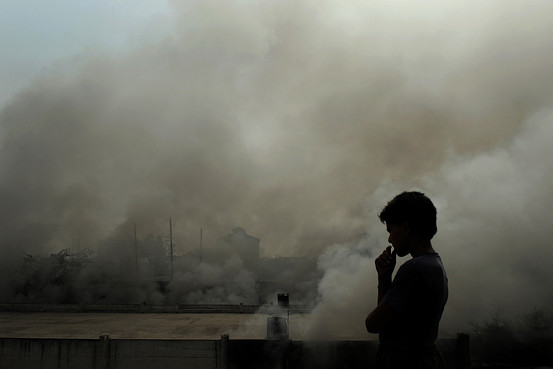
Smog in Delhi
Deepavali or Diwali as it is popularly known, is an annual festival and the dates may differ a bit according to the Hindu calendar, but it falls mostly in the October/November time of early winter in Delhi. A day after Deepavali, people wake up to massive smog, partly caused due to the millions of firecrackers burst in one night. Each year, the media carries out news articles about the impact of firecrackers. Every year, I get solemn pledges from our readers that they are going to stop bursting crackers as the level of pollution is becoming unbearable. But it seems the number of people who are aware about pollution is way too low to make a difference or may be some of them make a pledge as it is a good thing to do despite not having any intention to implement the same.
Similarly, the Government too wakes up and makes noises about containing pollution and then moves on to other priorities once the pollution has abated a bit.
However, this year, the level of pollution has been unprecedented. It was difficult to breathe. There was irritation in the eyes. The Delhi Government had to declare all schools to be closed for three days and advised people to work from home. It also banned construction for five days, ordered watering of roads to subside dust and also declared that it may bring back the controversial odd-even vehicle rationing scheme. The blame game on pollution became full blown with each accusing the other because the main causes for pollution are known and the Central Government, State Government of Delhi as well as the Governments of bordering states of Punjab and Haryana haven’t done much to improve the situation. Fortunately, the Hon’ble Supreme Court banned the sale of fire crackers in the National Capital Region (NCR) on November 25th, 2016 so atleast one reason for pollution is tackled.
Smog, Paddy Straw Burning & Systemic Deficiencies:
One of the major cause of the heavy smog over Delhi is due to farmers in Punjab and Haryana burning the paddy stalk after harvesting. This issue is known and it was also brought to the notice of the Supreme Court in 2012. “We are concerned about the level of smog in Delhi. With each passing day, the smog level is rising. Every day we are also hearing about the rising level of pollution in the city. We will deal with the matter,” a Supreme Court Bench, led by Chief Justice Altamas Kabir, had made this observation.

NASA image showing crop burning in Punjab
The Supreme Court appointed Environment Pollution (Prevention and Control) Authority had issued a statement that Punjab will immediately issue a notification under Section 19(5) of the Air (Prevention and Control of Pollution) Act.
On April 16, 2012, The Punjab and Haryana High Court had banned stubble burning in Punjab and Haryana. This judgment was given by a Division bench comprising the then Chief Justice Ranjan Gogoi and Justice Mahesh Grover. They had ordered “Since both paddy and wheat straw can be used as fodder, setting up of cattle feed industry can be encouraged, which in turn will provide another opening for absorption and use of the straw”.
Unfortunately, even after four years of the Supreme Court making that observation and the Punjab and Haryana High Court banning it, nothing has changed in the ground as farmers continue to burn paddy stalk and as a result Delhi chokes. So we take a fresh look into the problem and the core issue.
Faulty Agricultural Practices:
The farmers in Punjab and Haryana after harvesting the paddy, burn the paddy stalk in the fields. This is not practiced in other parts of India. They do it because they don’t want to spend money in tilling the soil and allowing time for the paddy stalk to decompose in the soil. The farmers immediately sow another crop after harvesting paddy. They think that if the stalk is not decomposed and they go ahead and sow the seeds in the fields then the germination of seeds won’t be effective. In other parts of India, farmers till the soil and the stalk gets mixed in the soil. The sowing of other crops are done and the slowly decomposing stalk in the soil does no harm to the seeds. In fact, the slowly decomposing paddy stalks acts as a good fertiliser.
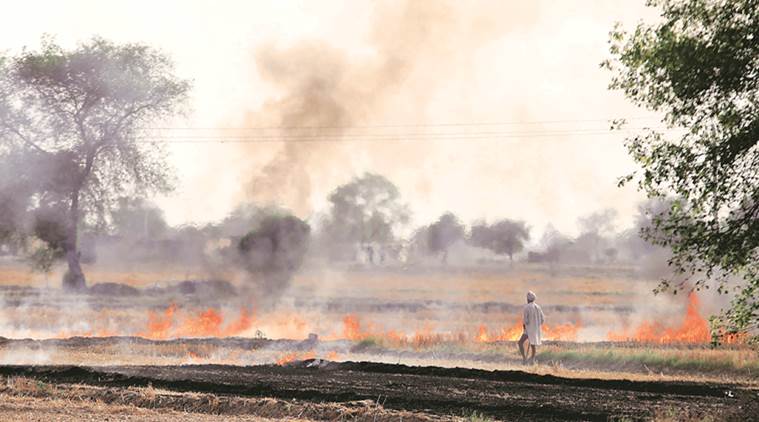
Paddy Stalk burning in Punjab Image Courtesy – Online Media
The farmers feel that the paddy stalk is not good for cattle and hence even if they cut it, they will have no way to dispose it off except burning it.
The farmers don’t realise that burning off the paddy stalk also means killing of the micro-nutrients of the soil. Since the time of the so called “green revolution” farmers in Punjab are used to pumping in huge amounts of synthetic fertiliser, and have essentially forgotten the impact of micro-nutrients
The farmers also have a time pressure as they need to plant another crop. Since they believe that the paddy stalk have to be removed from the fields and the labour is costly, they resort to burning the stalk to prepare the field in time for the next crop.
This time pressure is a result of the faulty procurement practices of Government of India. Rice is a crop that needs lot of water and Punjab is a semi-arid land. Conventional agricultural practices in India had developed based on the climatic conditions of our country. Unfortunately, we are fighting against nature to produce crops which are not suitable in a particular place.
Faulty Cropping Patterns:
Punjab being semi-arid, there is no reason what-so-ever to cultivate paddy. However, Punjab is the third largest paddy producing state in India. Due to the Bhakra-Nangal dam water is available and in other places ground water is exploited to cultivate rice. The Commission for Agricultural Costs and Prices in its report titled “Price Policy for Kharif Crops, The Marketing Season 2016-2017” clearly states the fact that Paddy Cultivation in Punjab is not water efficient. (page 33)
“Land productivity, i.e. production per unit of area, reflects only one dimension and ignores natural resource like water, which is becoming scarce. Punjab has the highest rice productivity (39.29 qtl/ha), followed by Haryana (32.12 qtl/ha) and Andhra Pradesh (30.45 qtl/ha). The per hectare water use by irrigation in these states is 161.78 lakh litre in Punjab followed by Tamil Nadu (137.50 lakh litre) and Uttar Pradesh (102.00 lakh litre). As against these states, per hectare water use by irrigation in Assam, West Bengal and Bihar is 50 lakh litre, 59.86 lakh litre and 66 lakh litre, respectively. If water consumption is measured in terms of per kilogram of rice, West Bengal becomes the most efficient state which consumes 2169 litre to produce one kg of rice, followed by Assam (2432 litre) and Karnataka (2635 litre). The water use is high in Punjab (4118 litre), Tamil Nadu (4557 litre) and Uttar Pradesh (4384 litre). It shows that the most efficient state in terms of land productivity is not necessarily the most efficient if irrigation water is factored into. This is because of high rainfall in the eastern region. Given that water tables in various states are depleting very fast, there is an urgent need to improve water use efficiency.
The country’s farm sector alone accounts for 83 percent of total water use. It is, therefore, imperative to augment the water productivity. Subsidizing electricity for agriculture in some states leads to its over use. The Commission in its previous report recommended metering electricity/water for their efficient use and reward farmers through cash incentive equivalent to unused units of water/power at the rates of their domestic resource costs. The Commission reiterates direct interventions in order to encourage the farmers to adopt water efficient practices like drip and sprinkler irrigation.”
India has already started witnessing water wars between various states and has already seen steady depletion of ground water levels to such an extent that in some places people are boring wells upto 900 feet deep. So India can’t be oblivious to the inefficient use of water in crops. Its procurement policy, as rightly suggested by the Commission for Agricultural Costs and Prices, should be based on water productivity i.e crop per hectare per litre.
The same report also throws another interesting point about procurement of rice.
“Procurement of rice in Assam was almost negligible during TE 2014-15, even though it contributed 4.7 percent to the total rice production. The procurement share of West Bengal is only 5.3 percent though marketed surplus share is 12 percent. Similar is the case in Bihar and West Bengal. As against this Punjab procured 24.9 percent of rice against its marketed surplus share of 13 percent during the corresponding period. The perpetual skewedness in the procurement for different states raises the issue of equity which needs to be addressed urgently to achieve the objective of the instrument of pricing policy”. (page 85)
The staple food in Punjab is roti and not rice. However, due to the skewed procurement and inequitable policy much higher level of procurement of rice is done in Punjab by the Government. This ensures that the farmers of Punjab who waste much more water, even exploiting ground water due to free electricity and despite causing pollution and pushing some 16 million population of Delhi towards cancer, bronchitis etc are rewarded with higher paddy procurement.
Way Forward:
The Government has to put an end to this nonsense. The Government has to also slap an environment surcharge on the Paddy Farmers of Punjab, Haryana. The Hon’ble Supreme Court of India has agreed to the concept of Environment Surcharge on trucks entering the National Capital Region. If Environmental Compensation Surcharge can be slapped on trucks, then surely it can also be slapped on Paddy procurement. So this surcharge has to be deducted from the all India MSP (Minimum Support Price) for Paddy. So effectively the MSP for paddy in the Punjab and Haryana region should be lower than the all India MSP of Paddy. Environment Surcharge on landholding would be difficult to administer and would breed corruption. So it is imperative to directly deduct the environmental surcharge from the MSP itself. In a few years there would be enough peer pressure from the farmers to other farmers for stopping the paddy stalk burning as the MSP of the entire state is lowered because of it.
Similarly, the Government has to give a disincentive to the Punjab and Haryana paddy farmers for higher water usage ie lower water productivity in the paddy crop and lower the MSP of Paddy for procurements in these areas.
A Government has to be just. It should treat every citizen as equal irrespective of their state of residence. The Government shouldn’t be supporting one state over the other. So the Government has to increase the procurement of rice from the eastern states of Assam, West Bengal, Bihar, Odisha based on their surplus and slash the procurement from Punjab and Haryana.
Announcements have to be done before hand that the official MSP for Rice in Punjab is lower than the eastern states due to the lower water productivity and due to environment compensation surcharge. This will ensure that there will be less of paddy grown in Punjab and less of paddy stalk burning in the winter.
This will help solve the major problem of Toxic pollution over Delhi by a big margin.
Ref: Price Policy for Kharif Crops, The Marketing Season 2016-2017
http://cacp.dacnet.nic.in/ViewQuestionare.aspx?Input=2&DocId=1&PageId=39&KeyId=574
- GoPro Hero 12 Black - 6 September,2023
- Leopards: The Last Stand - 2 July,2023
- Drifting in the Waters of Sundarbans - 26 March,2023


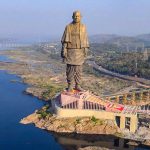
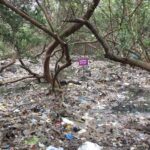


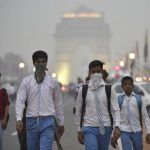
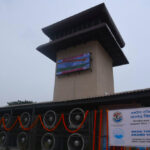



Excellent Article. Although not much is mentioned about causes behind the reluctance to implement the Supreme Court orders on stalk burning and how it can be stalked. Would like to hear more on that. All governments are going for crazy techno-and-crude oil-dependent solutions which would have more environmental side effects.
Thanks a lot.